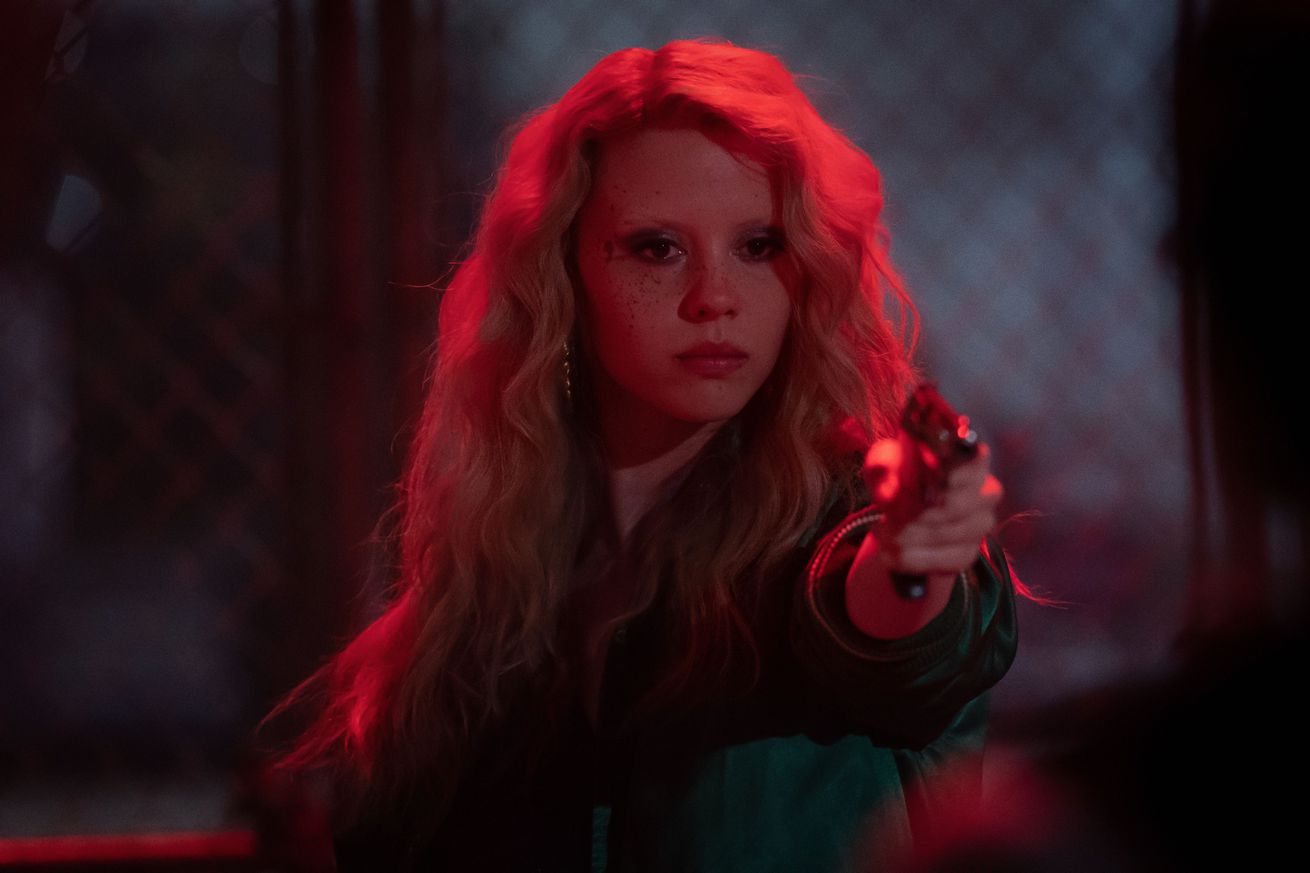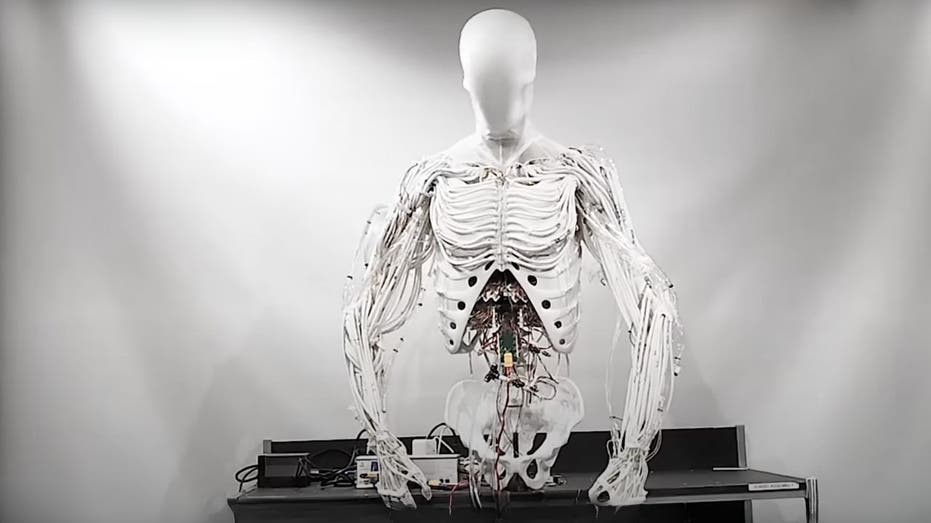- by foxnews
- 12 Mar 2025
Halloween 2024 storyscream: the best spooky things to watch and play
A curated selection of the best new horror games, movies, and TV shows to check out.
- by theverge
- 13 Oct 2024
- in technology

It's been a pretty good year for horror fans. When it comes to movies, the summer was packed with the likes of Cuckoo, MaXXXine, and Alien: Romulus, while gaming has seen releases such as a Silent Hill 2 remake and the retro Crow Country. So, if you're looking for something new to play or watch in the lead-up to Halloween, we've gathered all of our spookiest coverage here in one place to make things a little easier. (And if you missed it, we did the same thing last year.) So, grab some snacks, turn down the lights, and get ready for a few scares.
As much as studios love hyping up their latest scary movies as being so terrifying that they traumatize audiences, it is rare for features to live up to that kind of buzz. But The Substance writer / director Coralie Fargeat's new body horror is infinitely more disturbing (a feature, not a bug) than any of its early trailers have let on.
Films about the agony of living up to female beauty standards aren't new, but The Substance weaves them into an incisive feminist parable that feels jacked directly into the moment that has given us on-demand Ozempic and Brat. And what the film lacks in subtlety, it makes up for with an inspired - if stomach-turning - story that's meant to get all the way under your skin, no matter how secure in your body you might feel.
It's mind-boggling that Alien: Romulus almost wound up debuting on Hulu instead of theaters. The film's intricate set design alone makes it one of the series' most visually impressive chapters, and its practical effects are a welcome change of pace in a summer blockbuster season that has been dominated by uninspired CGI spectacle.
The release of Get Out in 2017 disturbed Hollywood - not just the box office but, briefly, the entire horror genre, which had long been the most consistent moneymaker in the industry. The film made a multiple of 56 times on its $4.5 million budget and was less a breakthrough and more of a victory lap for Blumhouse, the studio that had for nearly two decades championed scary movies at a low cost with hopes of a high return.
Partly, Get Out was exceptional - not the first movie where the true horror is racism, but one that balanced the terror with humor and absurdity. Eager to repeat that success, Hollywood greenlit a swath of horror movies about racism. Many of them were underwhelming and, in some cases, appalling. Mostly, it was exhausting to see so much repetition in a genre that thrives on novelty. But at least these movies were about something. Now we're onto the next wave of horror films, which have trended toward being about nothing.
Coming on the heels of Longlegs and Immaculate, director Tilman Singer's Cuckoo feels like the next phase of Neon's plan to dominate this summer of horror. The movie's haunting atmosphere and gorgeous cinematography make it seem primed to tap into Hollywood's current obsession with unsettling features running on spooky vibes alone. But for all of its hype and a solid performance from its leads, Cuckoo suffers from a lack of thematic coherence. It's definitely the strongest of Neon's recent scary movies, but that isn't exactly a high bar to clear.
Set in a corner of the German Alps where few foreigners tend to wander, Cuckoo follows as sullen, American teenager Gretchen (Hunter Schafer) is forced to move in with her estranged father, Luis (Marton Csokas), and his new family. With all of Gretchen's beloved bandmates and treasured possessions back in the States, she can't help but feel alone living with her stepmother Beth (Jessica Henwick) and mute half-sister Alma (Mila Lieu). And while Gretchen doesn't try to hide her distaste at being uprooted for Luis' job expanding a secluded resort owned by Herr König (Dan Stevens), she only feels comfortable expressing the depths of her sadness in voicemails to her unseen mother.
With X and Pearl, it was hard to miss that Ti West was using pornography and horror as lenses through which to tell a story about the evolution of film. Both were explorations of how naked bodies have always been a subject of cinematic fascination, and while the movies were tonally different, they similarly spotlighted how sex has always been one of the driving forces behind the advancement of movie-making technology.
MaXXXine enters the X franchise knowing full well how easily it could fall victim to the threequel curse if it simply dropped its star into a new decade to fight for her life on yet another farm. And while it features plenty of callbacks to its predecessors, it switches the formula up just enough to make it feel like West has pulled off a blood-soaked hat trick.
For the last few years, Ti West hasn't stopped thinking about the horror villains Pearl and Maxine. Since 2020, the writer and director has been fully immersed in the genre-spanning franchise that started with the '70s slasher flick X and continued with the technicolor prequel Pearl, which were filmed back-to-back in New Zealand during the pandemic and released in 2022. Now things culminate with the premiere of the series' third act, the very '80s thriller MaXXXine. It's been an intense process that has meant West hasn't had much time for anything else. "It's all such a blur at this point," he tells The Verge. "It's been seven days a week, 12 hours a day, for four and a half years."
The franchise was born, in part, out of practicality. West had initially only pitched X to the powers that be at A24 but had ideas for a bigger trilogy in the back of his mind. And after getting a cast and crew to New Zealand and building the sets, he realized he could film a lot of that work again for a prequel. "We had already spent all of this time and money building a Texas farm in New Zealand. How do we reuse it for free?" he remembers thinking. "How do we amortize all of those costs and make the movie less of a risk for A24? That's where the idea came from from a practical standpoint." He ended up writing the script for Pearl in a two-week-long flurry while in quarantine so that they could start shooting right away.
There is an honesty to I Saw the TV Glow's depiction of growing up as a lonely, fantasy-obsessed kid in the '90s that makes it resonate. And that's true regardless of whether you, like writer / director Jane Schoenbrun, were a fan of Buffy the Vampire Slayer.
The film's mind-bending story centers on Owen (Justice Smith) and Maddy (Brigette Lundy-Paine). The two outsiders spark an unlikely friendship over their shared love of The Pink Opaque, a fictional fantasy / horror series that feels like a twisted mashup of The Adventures of Pete & Pete and Are You Afraid of the Dark? Between its angsty, lo-fi atmosphere and pivots into explicit B-movie horror, almost every frame speaks to how large an impact Buffy had on Schoenbrun's young imagination. But you can also hear Schoenbrun channeling the ideas of queer theorists like Eve Kosofsky Sedgwick as the film explores what it really means to see one's self in fiction.
Traversing the nightmare realms of the human mind has always been central to horror. The stories we tell ourselves about what's moving in the darkness, the creation of monsters out of unknown sounds - from this emerges our fascination with terror. In Senua's Saga: Hellblade II, players navigate a cold, dark ninth-century Iceland in the often wet shoes of the Pictish warrior Senua on her second adventure in the third-person action-horror franchise. I was very fond of the first Hellblade, which saw Senua journey into Hel to save the soul of her lover. But the sequel pulled me in even further, with some of the most unforgettable and unsettling psychological horror I've ever experienced.
Senua, who lives with psychosis that causes her to hear constant voices, is a fierce warrior who has "killed" gods before in her personal quests at redemption. Cast out by her people in the Orkney Islands for being different, or a "witch," she has taken her battles across the sea to rescue her people from slavers.
Even as modern horror games become unnervingly immersive, there's still a place for the particular mood of old-school survival horror. Through a combo of grimy visuals, cryptic puzzles, slow pacing, and clunky controls, PlayStation-era games like Resident Evil and Silent Hill were able to create a distinct kind of tension and terror. Crow Country is what would happen if that kind of game never went out of style. It has the look and feel of the classics but with just the right amount of modern flourish. It's a perfect bite of classic horror.
Crow Country comes from indie studio SFB Games - led by brothers Tom and Adam Vian - which has so far managed to create quite the eclectic library of releases. There was the playful Switch launch title Snipperclips, the point-and-click murder mystery Tangle Tower, and now a dark survival horror game. Crow Country doesn't just evoke the '90s - it's set during the period as well. The entire game takes place in an abandoned Atlanta amusement park in 1990, as a woman named Mara sets out in search of the park's elusive owner who mysteriously disappeared. Of course, the place is teeming with monsters and mystery.
Discovering and latching on to pieces of art that touch you in profound, formative ways is a beautiful part of growing up in a world that's so thoroughly saturated with mass media. In their first film, We're All Going to the World's Fair, writer / director Jane Schoenbrun turned that facet of childhood into an intimate coming-of-age horror about creating one's identity on the internet.
But with their second feature, A24's I Saw the TV Glow, Schoenbrun cultivates that idea into an even more unsettling, moving narrative by framing obsessive fandom as both a blessing and a curse. Whereas We're All Going to the World's Fair was a snapshot of life in the age of modern social media, I Saw the TV Glow is an exploration of what it felt like to be an outcast teenager in the '90s - a time when young fans of sci-fi and fantasy often had to find each other by chance.
Horror films live and die by their conceits. And sometimes, the best way to make a movie scary is to place it in an environment that's not scary at all.
Is there anything further from spooky than a brightly lit TV studio? The surprise box office darling Late Night with the Devil, which hit horror streamer Shudder this weekend (and might be more suited to home viewing), tries to make one of the most innocuous American broadcast traditions into a terror. David Dastmalchian, a character actor who you'll recognize from the margins of half a dozen Christopher Nolan and Denis Villeneuve movies, gets a rare star turn as Jack Delroy, the host of late-night talk show Night Owls. But in an era where Johnny Carson rules after-hours broadcast, Delroy's second-place program is on the verge of getting canceled. The only way to save it, Delroy believes, is to air an extraordinary Halloween episode about the occult in the middle of sweeps season.
- by foxnews
- descember 09, 2016
Daring airport trend has travelers arriving at gate 15 minutes before takeoff
Flight passengers are participating in the new viral trend, "airport theory," with flyers arriving at their gates 15 minutes before their flights depart. A travel expert weighs in.
read more





